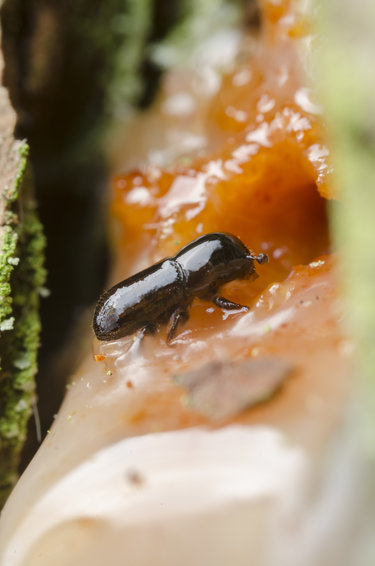DEC: Threat from southern pine beetles is expanding
Southern pine beetles, a destructive forest pest, pose a “significant threat” to pine forests, particularly pitch pine like that found in the Albany Pine Bush, according to the state’s Department of Environmental Conservation.
On Friday, the department announced the beetles have been found farther north than previously documented and in greater numbers, suggesting their range is expanding and populations are on the rise.
“We have known for some time that restoring the globally-rare ecology of the Albany Pine Bush is benefitting many rare plant and animal species and reducing the risk of uncontrolled wildfire,” said Neil Gifford, conservation director of the Albany Pine Bush Preserve, in a release from the DEC, announcing the threat.
“It turns out that the forest thinning, and prescribed burning may also protect the preserve’s iconic pitch pines from a new threat, southern pine beetle,” Gifford continued. “This approach has the added benefit of reducing the harmful effect of southern pine beetle and other forest pests and diseases.”
Gifford is out of his office until April 19, but the DEC website explains that cutting infested trees in early winter can reduce the population of southern pine beetles by killing the brood overwintering within the tree. Additional cuts made to the tree after it is on the ground causes the bark to loosen, exposing the overwintering beetles to cold temperatures and predators over time.
During summer months, when the beetle is expanding its reach, cutting infested trees disrupts its ability to communicate using pheromones making it more difficult for beetles to find each other and attack trees in large numbers.
Cutting trees also kills some of the brood within the tree as the beetle larvae are exposed to high temperatures from increased sun exposure, and predators.
Thinning uninfested trees is beneficial, the DEC explains, because increasing the distance between the trees disrupts the beetle’ ability to communicate as they spread out more, searching for trees to attack. Thinning also accomplishes artificially what fire would have done naturally by reducing competition among trees, creating a healthier stand that is better able to fend off attack by pests.
“Eradication of this pest is not feasible because it has become widespread, moves quickly, and is present in neighboring states,” the DEC website says.
So the state focuses on protecting large forested blocks and unique habitats, such as the Core Preservation Area of the Long Island Central Pine Barrens Preserve. Management efforts include aerial and ground surveys, tree inventories, cutting infested trees, and thinning uninfested trees. So far, more than 10,000 trees have been cut in the Core Preservation Area to slow the spread of the southern pine beetle and protect surrounding trees.
Expanding threat
Native to the southeastern United States, the southern pine beetle was first discovered infesting pitch pines on Long Island in 2014. Since then, it has killed hundreds of thousands of trees on Long Island alone.
A joint research project between the DEC’s Division of Lands and Forests and state’s Office of Parks, Recreation, and Historic Preservation’s Division of Environmental Stewardship and Planning resulted in a new trap detection of southern pine beetles at the Saratoga Sand Plains Wildlife Management Area in Saratoga County.
Additionally, according to the April 15 release, significantly larger trap catches of the beetles were documented at locations in the Hudson Valley where they were previously found, and several infested trees were discovered in Taconic State Park, the first infested trees to be identified outside of Long Island.
DEC, OPRHP, the Albany Pine Bush, and other partners have been monitoring beetle movement for several years in the areas of the state north of the known infestations in New Jersey and Long Island.
Since 2016, the southern pine beetle had been detected in low numbers in insect traps in the Hudson Valley but the recent increase in trapped beetles may mean they will soon be established north of Long Island. Trapping efforts in Schunnemunk, Minnewaska, and Taconic state parks produced numbers previously seen only on Long Island.
The three infested pine trees in Taconic State Park were found near Sunset Rock during a survey. A DEC strike team removed and destroyed the infested trees in cooperation with OPRHP staff.
Surveys of pine forests near the increased trap catches continue, and experts with both state agencies and partners agree that more infested pines are likely to be found in the next few years as the climate warms.
The beetles primarily attack pitch pine and red pine but will attack additional conifers when outbreaks occur. The DEC encourages the public to report any signs of southern pine forests that they encounter in pine forests (outside of Long Island) by emailing pictures and location information to foresthealth@dec.ny.gov.
The signs of an infestation include discolored needles (yellowing to brownish-red), popcorn-sized clumps of resin called pitch tubes anywhere along the trunk, tiny holes in the bark in a scattershot pattern, and s-shaped galleries under the bark.



